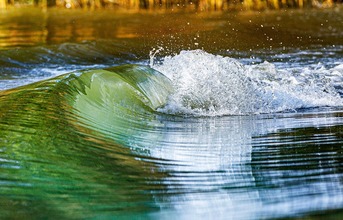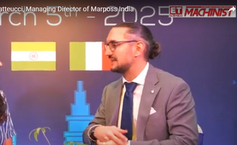
While others race to the Moon and back, the Faroe Islands Space Programme is taking a bold step in space exploration without leaving Earth. One of the world's largest bearing manufacturers, SKF, and ocean energy developer Minesto are launching a space programme to harness the Moon's energy by leveraging the power of the tides. This initiative seeks to utilise the resources already available on Earth.
"Imagine a future powered by the tides of the Moon. This unique project dares to dream big and explores the potential of renewable tidal energy. At SKF, we are proud to be part of this down-to-earth initiative, which aligns with our values and ambition to create a more sustainable world," says Annika Ölme, CTO & SVP, Technology Development, SKF.
Over the past year, SKF and Minesto have been pioneering tidal energy using tidal kites in the Atlantic Ocean off the Faroe Islands. Their mission is to harness the Moon's power for predictable and renewable energy. Following its successful launch into the ocean, the tidal kite, called LUNA, is now flying underwater, invisibly and silently harvesting energy from the Moon—regardless of the weather. Today, only a few countries with favourable tidal currents are beginning to utilise the full potential of Moon-generated energy, the most predictable renewable energy source on the planet.
"For us, as a technology development company, working with a global industrial company such as SKF is both a learning experience and an inspiration," says Martin Edlund, CEO of Minesto. "We estimate there are at least 3,000 more ‘Faroe Islands' globally that qualify for our space programme—if they all joined, Moon energy could replace all coal power capacity currently under development worldwide."
The established tidal energy facility, Moon energy base—will mark the launch of the Faroe Islands Space Programme, firmly grounded on Earth. The LUNA kite has a rated power of 1.2 MW, enough to supply electricity to 200 homes for a year. The next objective is to implement a new 200 MW tidal energy facility. This could meet 40 per cent of the anticipated electricity needs by 2030, providing green energy to the small, remote island nation's 50,000 people and 70,000 sheep. Unlocking the power of the tides is a collaborative effort with power company SEV:
"Our vision is to achieve 100 per cent renewable electricity generation by 2030, and we believe that tidal power could become a vital part of this journey," says Hákun Djurhuus, CEO of the Faroese electricity company SEV.
SKF was brought on board to design the bearing and sealing systems for the rudders and elevators of the kites. The SKF software system calculates bearing rating life and estimates CO2 emissions, enabling comparisons between different solutions not only from a technical perspective but also in terms of sustainability.
"Collaboration across industries is essential for progress. Together with Minesto, we are demonstrating how technology and innovation can drive the transition to renewable energy,' says Annika Ölme, CTO & SVP, Technology Development, SKF.
Furthermore, SKF's presence in key global markets, including India and Southeast Asia, highlights the broader potential of tidal energy solutions.
"This collaboration with Minesto represents a breakthrough in our approach to renewable energy, utilising the Moon's gravitational pull to create a steady and predictable power source," says Sujeeth Pai, Director, Industrial Market, SKF India Ltd. "As countries like India strive for energy security and sustainability, solutions like tidal energy offer immense potential, particularly for coastal regions. At SKF, we are committed to enabling this transformation through our advanced bearing and sealing technologies, ensuring the long-term efficiency and reliability of tidal energy systems. The Faroe Islands project serves as a model that could be replicated in regions with high tidal energy potential, contributing to a cleaner global energy mix."



























